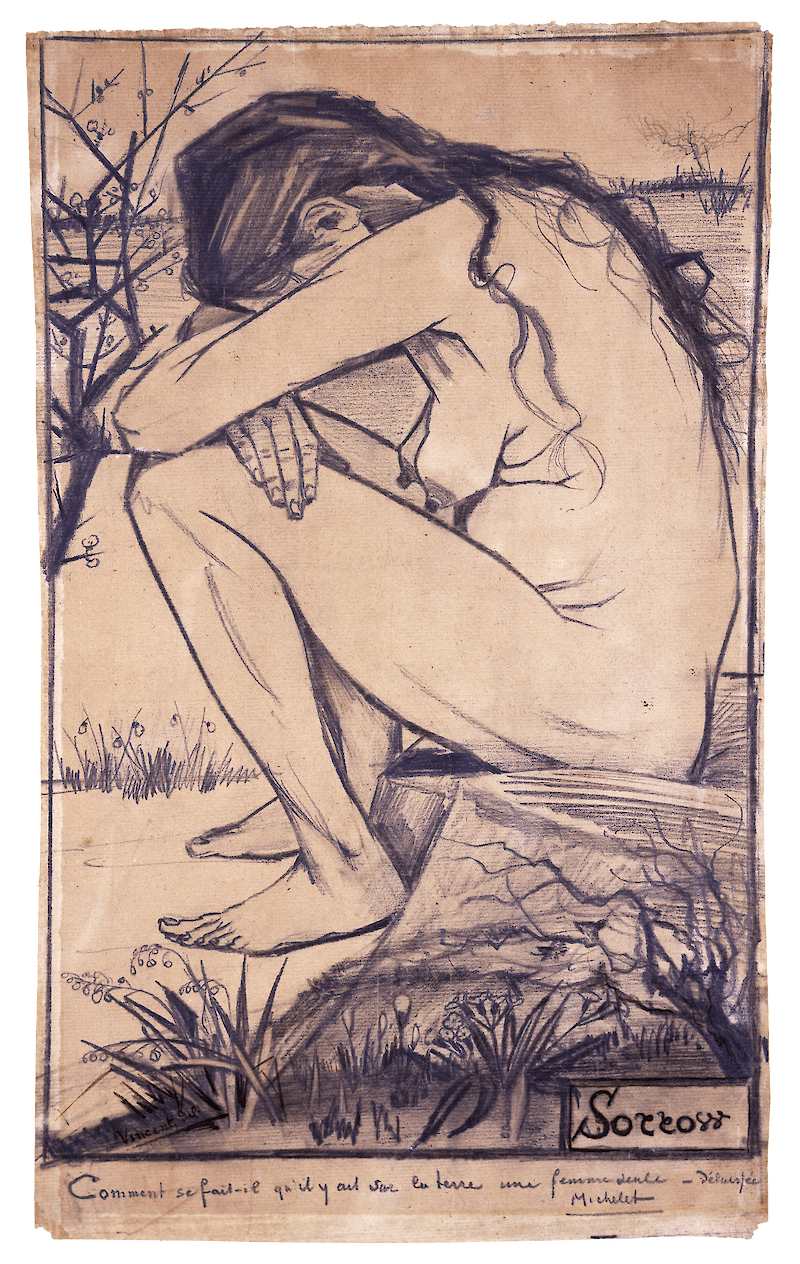


Vincent Van Gogh was a late bloomer, only beginning to seriously pursue art at age 29, at the prompting of his brother Theo. In Sorrow, we see the progress that Van Gogh had made after two years of serious study. Always lacking in money, Van Gogh often drew and painted his neighbors or people he hired off the street to model, but Sorrow is a portrait of his mistress, the pregnant, homeless prostitute Clasina Maria Hoornik, who went by the name Sien.
When Van Gogh met Sien, she was sick, weak from postoperative complications and venereal disease. Van Gogh moved Sien and her daughter into his home, where he drew and painted her, and attempted to nurse her back to health. Sien was a tragic muse for Van Gogh. They shared a penchant for depression and alcoholism, and their relationship struck a permanent rift between Van Gogh and many of his family and friends.
Sorrow is a poignant work, simple in execution but representative of the exhaustion of the working poor. Across the bottom of the drawing is inscribed a quote from the social historian Jules Michelet, reading Comment se fait-il qu'il y ait sur la terre une femme seule, délaissée?—"How can there be on earth a woman alone, abandoned?” Van Gogh considered Sorrow to be one of his most effective portraits, about the work he said, “I want to make drawings that touch some people. Sorrow is a small beginning ... there is at least something directly from my own heart.”
